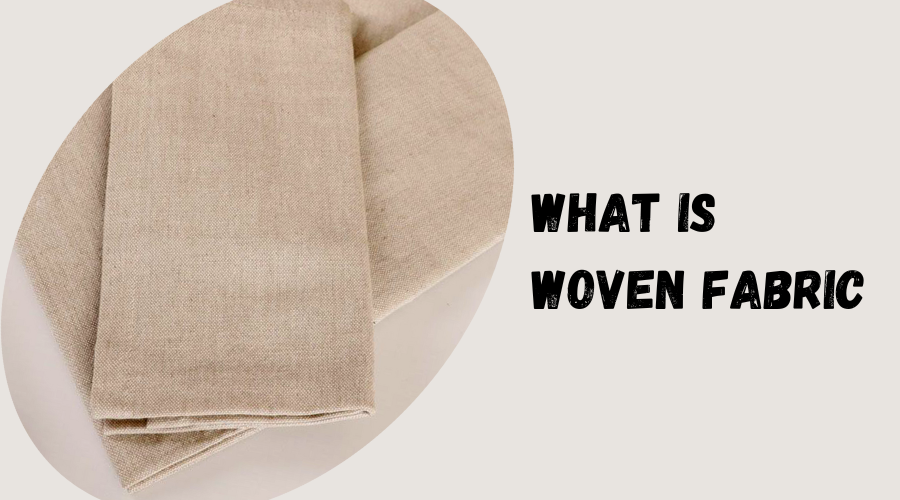
There are lots of industries under the umbrella of the fabric industry. You can count on clothing upholstery, undergarments, home decoration, automobiles, and even the construction industry. All of them have one thing in common, which is the use of fabric. Woven fabric is one of the many types common in that colossal industry, which makes everyone wonder how their clothes become so durable and beautiful. The color intensity, soft touch, consistent weaving pattern, and tailorable features are part of a woven fabric.
These many features come through the weaving process, which is not simple. Large machines must perform hours of weaving to bring you the finest woven fabric. In this ecommerce era, many businesses increasingly deal in woven fabric. How does the demand remain consistent or rise? Something in this fabric could make it versatile enough to be used throughout the entire industry.
A woven fabric manufactured through crisscross weaving is a woven fabric. It has interlaced threads through warping (vertical) and filling/wefting (horizontal) on a loom. When you look closely, it has an exact texture in a crisscross form. A horizontal and vertical interlacing of threads makes it a woven fabric through crisscross weaving. Since it comes from a complex weaving process, various patterns affect the quality of the fabric. Therefore, three main types of woven fabric are used in the global industry.
All three types are different because of the difference in weaving patterns. Their durability, softness, appearance, and many characteristics differ because of weaving differences. Here are the types that you can find in the fabric industry.
The first one is plain weave, which has a simple structure and flat surface. It has a plain crisscross pattern with a 1/1 format and a simple appearance. Because of its 1/1 wefting and warping, it has less draping. The fabric in plain weave wrinkles easily and creases. But this doesn’t make it less appealing because it is the most common fabric for a decent appearance.
If you look closely, the plain weave has a checkerboard pattern. That pattern gives it an equal and balanced appearance. Furthermore, it is more durable and stronger than the other types. The reason is the same: it's a 1/1 wefting and warping pattern with high interlacing. In detail, the warping and wefting process creates a one-under and one-over pattern. Plain weaves are found in various fabric types, from clothing to upholstery. Plain weave has a lower density because of its 1/1 pattern.
To further classify this type, here are all the most common plain weave types in the fabric industry.
Then you have a twill weave with slightly different features than the plain one. What makes it better in terms of appearance is its wrinkle resistance. You will not find it getting creases as compared to plain weave. The way it is woven, it gets automatic wrinkle resistance. Its weave patterns are usually 2/2, 2/1, and 3/1. Therefore, the twill weave has diagonal lines through its weaving process. When you touch it or look closely, you will see its pattern, which makes clear diagonal lines.
Due to this weaving pattern, it has a better drape than plain weave. The 2/2 or 3/1 pattern makes it slightly curved than the plain one. Therefore, it has a higher density than plain weave. Twill weave is also thicker than plain because of this 2/2 interlacing method. If you want to know how it appears, it is famous for denim. Denim has a diagonal texture because of the twill weave. Likewise, chino has a similar diagonal pattern because of the double weaving pattern of 2/2, 2/1, and 3/1. Besides them, here are some prime examples of twill weave fabric.
The final and third type is satin weave, which is the softest fabric. What makes it different from others is its weaving pattern. It has a 1/4 pattern, which results in the highest draping. Therefore, it has a luxurious and lustrous appearance compared to others. The 1/4 weaving pattern makes it drape in the best manner. Thus, the appearance automatically becomes luxurious for garments like women's wear.
Its softness and highest density make it the most preferred type for luxurious clothing. Moreover, its sheen appearance gives it an edge over others in the niche industry. Satin’s weaving pattern reflects light, which further adds value to it.
However, it is less durable than the first and second types. Its long floating yarns are prone to pilling and fiber pulling. Therefore, it requires more care than the other two. This type has very few examples, and they are below.
The entire fabric industry uses various types of weave patterns to achieve the texture they need. Every application or fabric has a specific audience, and choosing the right weave matters a lot. Some industries deal with plain weave, some with twill weave, and some with satin weave. These different fabric patterns have many subcategories that classify clothing's nature. Some clothes are beautiful but less durable, and vice versa. Therefore, manufacturers have to use the right pattern to meet user demands.